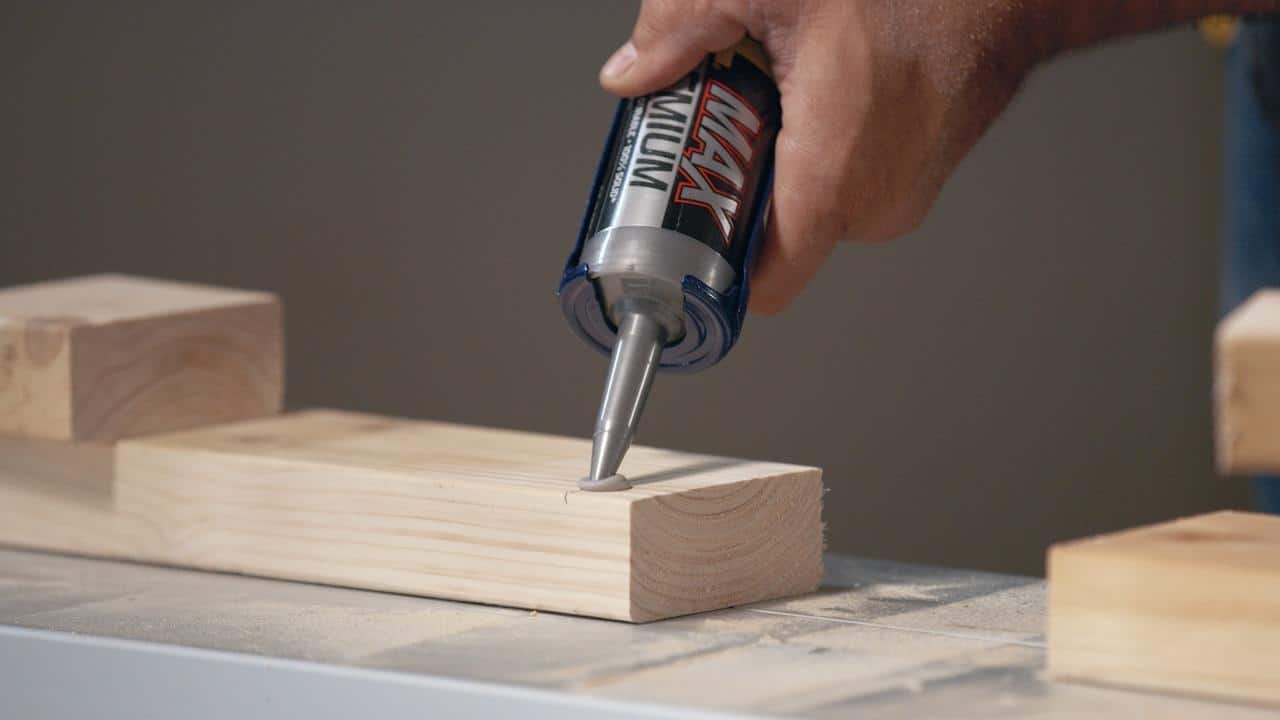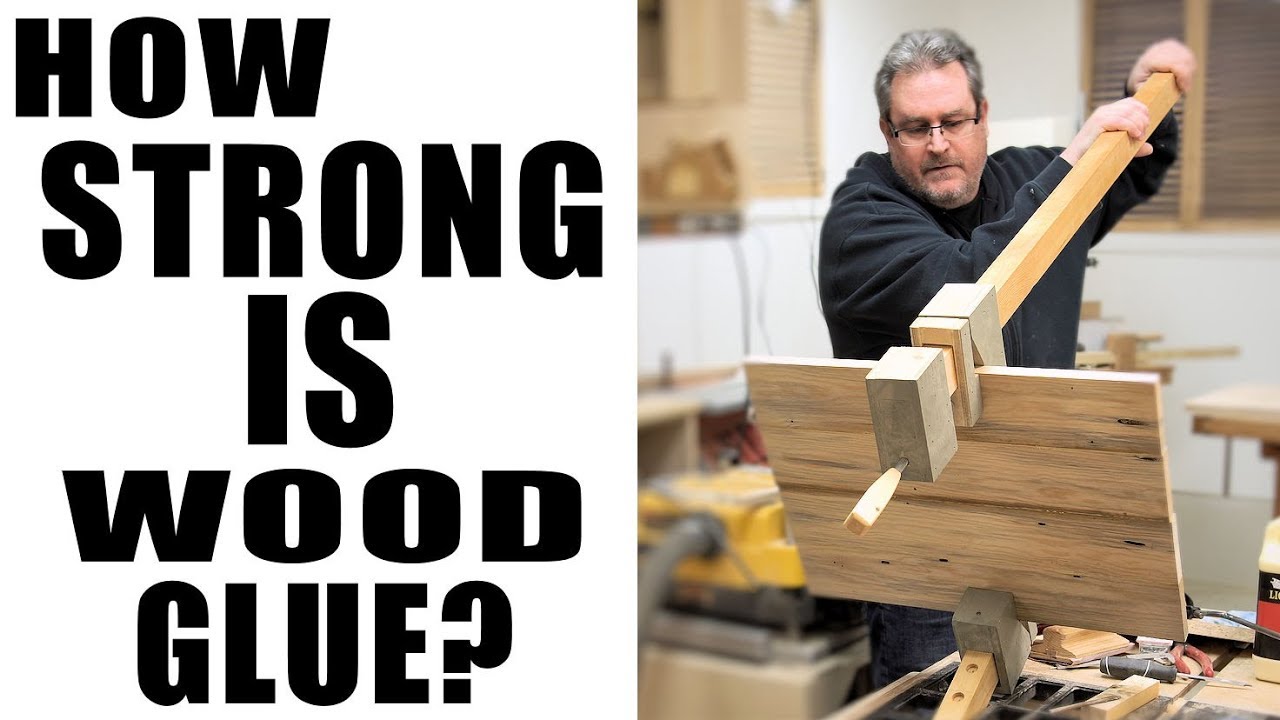Wood glue, how tough is it? You may be wondering about the strength and durability of this adhesive commonly used in woodworking projects. Well, let me tell you, wood glue is more than just a sticky substance. It’s a superhero in the world of carpentry, bonding wood with an unparalleled tenacity.
When it comes to holding wood together, wood glue does the job exceptionally well. Whether you’re building furniture, repairing a broken chair, or crafting a wooden masterpiece, wood glue provides the strength and resilience needed to withstand the test of time.
So, how tough is wood glue? Let’s dive deeper into the fascinating world of this versatile adhesive and explore its incredible bonding abilities that make it an essential tool for any woodworker. Get ready to unleash the power of wood glue!

How Tough is Wood Glue?: A Deep Dive into the Strength and Durability of Wood Glue
Wood glue is a commonly used adhesive in woodworking projects, but many people wonder just how tough it really is. Can it withstand heavy loads and constant use? In this article, we will explore the strength and durability of wood glue, examining its various properties and applications. Whether you are a professional woodworker or a DIY enthusiast, understanding the toughness of wood glue is essential for ensuring the longevity and stability of your projects.
Types and Uses of Wood Glue
Wood glue comes in several different types, each with its own unique characteristics and uses. The most common type of wood glue is PVA (Polyvinyl Acetate) glue, which is known for its strong bonding strength and ease of use. It is suitable for both indoor and outdoor applications and can bond various types of wood together.
Another type of wood glue is epoxy, which is known for its incredible strength and resistance to moisture. Epoxy glue is often used in demanding applications, such as bonding hardwoods or repairing damaged wooden structures. It provides excellent adhesion and can withstand heavy loads and extreme conditions.
Lastly, there is the hide glue, which is derived from animal collagen and has been used for centuries in woodworking. Hide glue provides a strong bond and is known for its reversibility, making it ideal for restoration projects where disassembly may be required.
Strength and Durability of Wood Glue
Wood glue is renowned for its excellent strength and durability. When applied correctly and allowed to fully cure, it can create bonds that are often stronger than the wood itself. However, the specific strength and durability of wood glue can vary depending on various factors:
1. Bonding Surface: The quality of the bonding surface plays a crucial role in the strength of the glue joint. For optimal results, the surfaces to be bonded should be clean, dry, and free of any grease or contaminants. Proper preparation of the bonding surfaces ensures maximum adhesion and enhances the overall strength of the glue joint.
2. Curing Time: Wood glue requires time to fully cure and reach its maximum strength. The curing time can vary depending on the type of glue and environmental conditions. It is important to follow the manufacturer’s instructions regarding curing time for optimal bond strength.
3. Clamping: Clamping the glued surfaces helps create a strong and even bond. Applying pressure using clamps ensures that the adhesive is spread evenly and minimizes any gaps or air bubbles. Proper clamping is especially important for demanding applications where strength and durability are paramount.
4. Environmental Factors: The durability of wood glue can be affected by environmental factors such as temperature and moisture. Extreme temperature changes or exposure to moisture can weaken the bond over time. It is important to consider these factors when choosing the right type of wood glue for your project.
In summary, wood glue is known for its toughness and durability. When used correctly and under the right conditions, it can create strong and long-lasting bonds in woodworking projects.
Tips for Maximizing the Strength of Wood Glue
To ensure the maximum strength and durability of wood glue bonds, here are some tips to keep in mind:
1. Proper Surface Preparation
Before applying wood glue, make sure to clean the bonding surfaces thoroughly. Remove any dust, debris, or old glue residue. It is also important to ensure that the surfaces are dry and free of any moisture. Proper surface preparation will enhance the bond strength and ensure a long-lasting joint.
2. Use Clamps for Even Pressure
When applying wood glue, use clamps to apply even pressure to the glued surfaces. This helps to distribute the adhesive evenly and eliminates any gaps or air bubbles. Use the appropriate number of clamps to ensure a tight and secure bond. Leave the clamps in place for the recommended curing time to achieve optimal strength.
3. Choose the Right Type of Wood Glue
Different woodworking projects may require different types of wood glue. Consider the specific requirements of your project and choose the appropriate type of wood glue accordingly. Whether you need moisture resistance, high strength, or reversibility, selecting the right wood glue will ensure the best results.
Benefits of Using Wood Glue
Using wood glue offers several benefits in woodworking projects:
1. Stronger Joints
Wood glue creates strong and durable joints that enhance the overall strength and stability of woodworking projects. It can withstand heavy loads and constant use, ensuring the longevity of the finished piece.
2. Versatility
Wood glue can be used for a wide range of woodworking applications, including joining boards, laminating, veneering, and repairing damaged wooden structures. Its versatility makes it a valuable adhesive for various projects.
3. Ease of Use
Compared to other adhesives, wood glue is easy to work with. It has a relatively long open time, allowing for adjustments and proper alignment of the glued surfaces. It is also easily spreadable and provides excellent coverage, making it an ideal adhesive for both professionals and DIY enthusiasts.
In conclusion, wood glue is indeed tough and durable when used correctly. It offers strong bonding strength, resilience to moisture, and versatility in various woodworking applications. By following proper application techniques and selecting the right type of wood glue for your project, you can achieve long-lasting, reliable bonds in your woodworking endeavors.
Key Takeaways: How Tough is Wood Glue?
In this article, we will explore the durability and strength of wood glue in a conversational tone that’s easy to understand for a 13-year-old. You’ll learn the main characteristics of wood glue and its importance in woodworking projects.
- Wood glue is known for its exceptional bonding strength.
- It forms a strong adhesive bond between wood pieces.
- Wood glue can withstand various stressors, such as pulling and bending forces.
- Wood glue is tough enough to withstand daily wear and tear.
- It provides long-lasting durability to woodworking projects.
Frequently Asked Questions
Here are some common questions about the strength of wood glue:
1. How strong is wood glue?
Wood glue is renowned for its strength and durability. It forms a bond that is often stronger than the wood itself, making it an excellent choice for woodworking projects. The strength of wood glue primarily depends on the type of glue used and the quality of the bond surface. When used correctly, wood glue can provide a secure and long-lasting hold.
Affordable and widely available, wood glue is an adhesive that is specifically formulated for bonding wood surfaces. It is designed to penetrate the pores of the wood, creating a strong chemical bond. The glue dries to form a rigid bond, capable of withstanding stress, weight, and various environmental factors that wood is exposed to over time.
2. Can wood glue be used for heavy-duty projects?
Wood glue is suitable for a wide range of woodworking projects, from small crafts to large-scale constructions. However, its strength and suitability for heavy-duty projects depend on the specific type of wood glue used. For heavy-duty applications, it is recommended to use wood glues that are specifically designed for high strength or exterior use.
These specialized wood glues have a higher bonding strength and are more resistant to moisture and other environmental factors. They can withstand heavy loads, making them ideal for projects such as furniture construction, cabinetry, and outdoor structures.
3. How does wood glue compare to other types of adhesives?
Wood glue is often the preferred choice for woodworking projects because it provides a strong and reliable bond specifically formulated for wood surfaces. Compared to other types of adhesives, such as epoxy or super glue, wood glue offers several advantages.
Firstly, wood glue is more forgiving in terms of assembly time, allowing for proper alignment and adjustments before the bond sets. It also has better gap-filling capabilities, which is useful for projects where the surfaces may not fit perfectly together. Additionally, wood glue is typically non-toxic and water-based, making it safer to use and easy to clean up.
4. How long does it take for wood glue to dry?
The drying time of wood glue depends on various factors, including the specific type of glue, humidity levels, and temperature. In general, wood glue requires some clamping time and then needs 24 hours or more to fully cure.
During the clamping time, which is typically around 30 minutes to 1 hour, it is essential to apply pressure to ensure a tight bond. However, it is important to check the product instructions for the specific wood glue being used, as drying times can vary. It is advisable to wait until the glue is fully cured before subjecting the bond to stress or weight.
5. Can wood glue be used on all types of wood?
Wood glue is generally suitable for bonding most types of wood, including hardwoods, softwoods, and plywood. However, certain factors can affect the bonding strength, such as surface finish, moisture content, and the presence of oils or contaminants.
It is important to prepare the wood surfaces properly before applying the glue by removing any finishes, ensuring a clean and dry surface. Additionally, roughening the surface slightly can enhance the bond. If working with oily or dense hardwoods, using a specialized wood glue formulated for those types of wood may yield better results.

Summary
Wood glue is super strong and can bond different types of wood together securely.
It is important to choose the right type of wood glue for your project and follow the instructions for best results.
